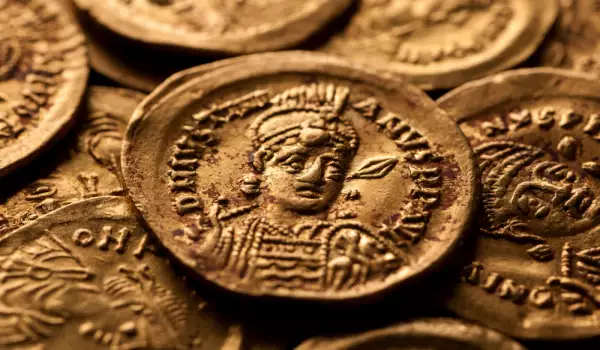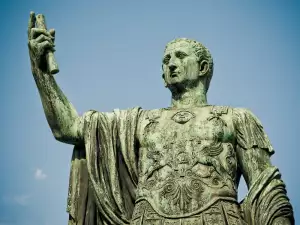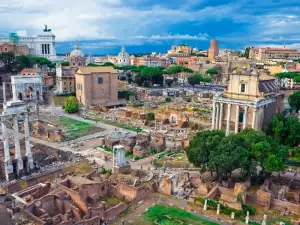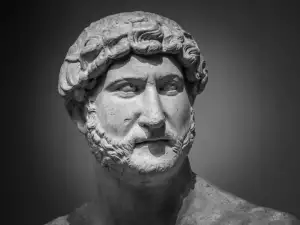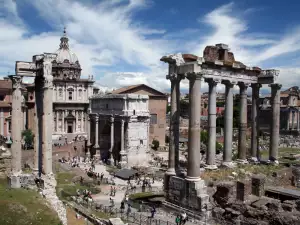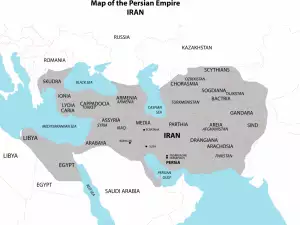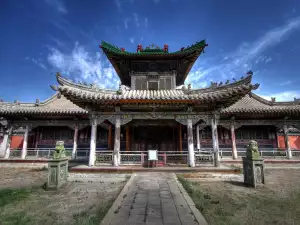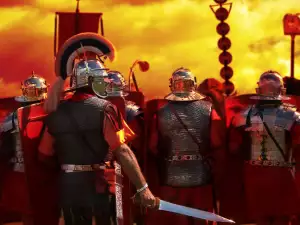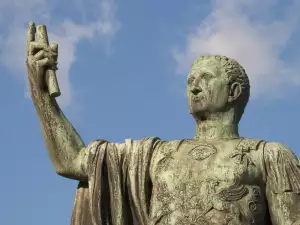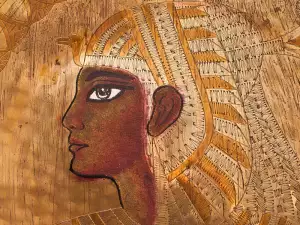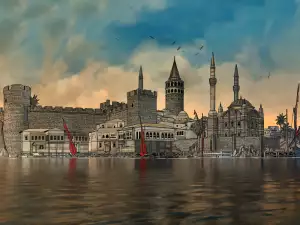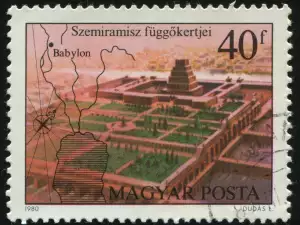The Byzantine Empire was a vast and powerful civilization that played a major role in the political life of Europe and Asia throughout most of the Middle Ages. By the end of the 10th century, it was the strongest and most developed state in the Old World. Even with reduced borders, its cultural influence extended over all of Europe and the Middle East.
The history of the mighty state began in 330. Then the Roman emperor Constantine I moved the capital of the Roman Empire from the eternal city to New Rome - the city named after him Constantinople, the former Greek colony Byzantium, on the border between Europe and Asia.
In 395, the Roman Empire was finally divided into Western with Rome as its capital and Eastern with Constantinople as its capital.
The new state turns out to be much more viable. It inherited some of the richest provinces of the great empire that ruled the Mediterranean for the past five centuries. Anatolia, Syria, Palestine and especially rich Egypt fall within the borders of Byzantium.
The Western Roman Empire did not last long. Although its lands were richer and the great Rome ruled, the pressure from the various barbarian nations was overwhelming and in 476 the last ruler of the eternal city was overthrown by the German general Odoacer. This ended the Roman Empire in its original form. The signs of the authority of the Roman emperors were sent to Constantinople and Byzantium became the sole heir of Rome.
Although in science the Eastern Empire is called Byzantium and its inhabitants Byzantines, the truth is that no one in the times of the empire used these terms. The country is called the Roman Empire or Eastern Roman Empire, its inhabitants are Romans or Romai. Until the year 700, the official language of the state was Latin and then it was replaced by Greek.
The beginning of the Byzantine Empire was not easy. Although it received the most populous and richest provinces, it also inherited the most powerful opponents - Sassanid Persia and the eastern nomadic empires that arose with the first waves of the Great Migration. Byzantium's advantage was its almost impregnable capital. A strong administrative center allowed emperors to exercise greater control over resources and provided the stability the state needed to meet the challenges of the early Middle Ages.
Constantinople also became the center of Christianity - the then new religion that spread like wildfire in Europe, Asia and Africa. The Council of Chalcedon in 451 formally established the division of Christendom into five patriarchates, each ruling from its own capital. These are Rome (where the patriarch later came to be called pope), Constantinople, Alexandria, Antioch and Jerusalem.
The Byzantine Emperor is the Patriarch of Constantinople and head of church and state. After the Islamic empire conquered Alexandria, Antioch and Jerusalem in the seventh century, the Byzantine emperor became the spiritual leader of most Eastern Christians.
In the first hundred years of its existence, Byzantium was in constant defense. It fights continuous wars to protect its borders. Its most powerful enemies at the time were the Sassanid Empire, with which it disputed the lands of Armenia, Mesopotamia and Syria. Also the Hun Empire, which, however, collapsed after Attila's death in 453. The Goths often ravaged the Balkans and around 500 they were replaced by the Avars, who founded the powerful for their time Avar Haganate. At that time, the Slavs also came to the Balkans and settled almost the entire Balkan Peninsula, limiting the possessions of Byzantium in this area only around Constantinople, Thessalonica and the Peloponnese Peninsula.
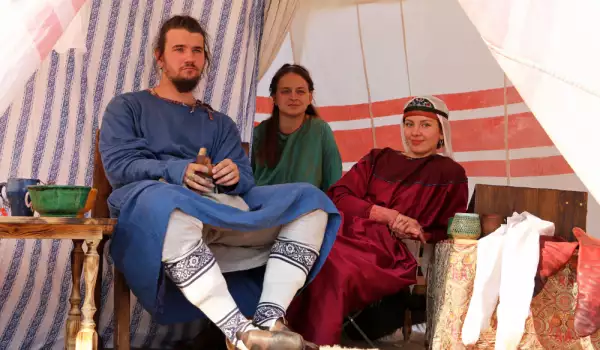
It was in this situation that Emperor Justinian I – the greatest Byzantine ruler – sat on the throne in Constantinople. Born in Illyria, he succeeded his childless uncle Justin I in 527 and ruled, until his death in 565.
During the years of his rule, the empire conquered most of the lands around the Mediterranean Sea. Justinian's armies conquered vast parts of the former Western Roman Empire, including North Africa.
Many great monuments of the empire were built under Justinian, including the majestic domed Church of Hagia Sophia. Justinian also reformed and codified Roman law, establishing a Byzantine legal code that lasted for centuries and helped shape the modern concept of the state.
After his death, Justinian became known as the Great - The Byzantine Empire was the largest and most powerful state in Europe, Asia and Africa. He is the only ruler of the Eastern Empire who came closest to the cherished goal of all the rulers of Constantinople, namely the restoration of the greatness of Rome.
At the beginning of his reign, Justinian began a war with Persia. In 532 he concluded a treaty of eternal peace with the Sassanid rulers. The borders are frozen and each of the two rulers can face the other enemies threatening their empires - the Persians in the east against the White Huns and the Byzantines in the west against the Germanic barbarians.
In the year 533, he invaded North Africa with his troops, where at that time the powerful Kingdom of the Vandals and Alans was located. Under the pretext of attacking to protect Catholics persecuted by the Arians (a Christian sect that included most of the newly ascendant Germanic kings), Byzantine armies landed on the coast of North Africa and captured Carthage, the capital of the vandals. After a few brief skirmishes, Byzantium regained control of all of North Africa, from which the Romans had been expelled nearly 100 years earlier.
Justinian's armies then invaded Italy in 540. After a seven-year war, they defeated the powerful kingdom of the Ostrogoths and rejoined the city of Rome to the empire. Meanwhile, wars with the Persians broke out again in the east, but this did not stop Justinian's dream of regaining control over the lands of the Western Roman Empire.
Soon he attacked another Gothic kingdom - the Visigoths, ruling the lands of today's Spain, Portugal and southern France. Despite achieving many victories, Byzantium was unable to completely defeat the Visigoths. Still, he conquered considerable lands in southern and eastern Spain.
The death of Justinian found the Byzantine Empire in an unenviable position. Although the largest and most powerful country in the Old World, the debts accumulated during the many wars left the empire in dire financial straits. The emperor's heirs are forced to levy additional taxes on Byzantine citizens to keep the empire afloat in the hostile sea that surrounds it.
The Mighty Byzantine Army is spread across the empire to guard the newly acquired lands. Shortly after the death of the great emperor, Byzantium lost all lands in Spain. From the north, Italy was invaded by the Logobarards - a Germanic tribe that founded a strong kingdom in the northern parts of the peninsula. The greatest troubles, however, come to the east. Slavs continue to come and flood the entire Balkan Peninsula. In the Middle East, the war with Persia became increasingly fierce, reaching its climax in 602 – 628. Then, under Emperor Heraclius, the Persians inflicted a series of heavy defeats on the Byzantines and conquered Egypt, Palestine, Syria and almost all of Anatolia. With their Avar and Slavic allies, the Persians besieged even Constantinople and carried to their capital Ctesitophon a piece of the cross of Jesus, an event that shook the whole Christian world.
Heraclius even considered moving the capital to Carthage to preserve the empire. He abandoned this idea and instead reorganized the army and with the help of the clergy, declared a Holy War on Persia. After a series of victories, he managed to inflict several crushing defeats on the Persians, captured all the lost lands and entered the capital of the Sassanids, from where he returned the Holy Cross to Constantinople. The Sassanid Empire never recovered from this defeat.
But then a new threat appears in the east that changes the world's political situation forever. In 632, Islam rose and the subsequent Arab invasion.
The old empires of Byzantium and Persia were too exhausted from prolonged conflict to withstand the new Arab threat. When the Muslims invaded Syria and Palestine in 634, Heraclius, who was ill, was unable to lead his troops in person and his generals failed. At the Battle of Yarmouk in 636, the outnumbered Byzantines were routed by the Arabs.
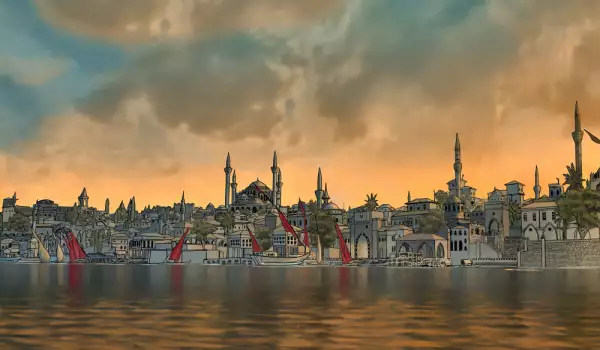
Most likely, this happens due to the passage of 12, 000 Christian Arabs from Byzantine to Arab countries. The cities of Damascus (635) and Jerusalem (638) fell into the hands of the Arab conquerors. Syria and Palestine are lost forever. At the same time the Persians lost Mesopotamia and soon after their entire country. Only the mountainous terrain of Asia Minor held back the Arab advance towards the capital of Byzantium.
The Lombards in the west, taking advantage of the weakness of the Byzantines, took most of Italy. This way, the Eastern Roman Empire lost more than half of its lands and never regained its former power.
In the following centuries, Byzantium tried to keep the remaining lands under its control. In 680, the Bulgarians invaded from the north and a year later founded the First Bulgarian State. The so-called Bulgarian-Byzantine wars began, which continued with small interruptions for the next almost three hundred years.
Byzantium was surrounded by enemies from all sides, constantly losing lands. It is forced to protect its borders not only by war, but also by diplomacy. This way, in alliance with Khan Tervel's Bulgarians, he defeated the Arabs and saved Constantinople. The Byzantines constantly incited some nations to attack others, eventually managing to stabilize their state.
A powerful tool in the hands of the emperors is Christianity. With their preachers, they succeeded in baptizing many of the neighboring nations, attaching them to the bosom of Orthodoxy.
However, the wars with the Bulgarians and the Arabs did not stop. This greatly depleted the empire. With the Macedonian dynasty coming to power, the empire stabilized. The empire makes peace with Bulgaria and turns its eyes to the east. After a series of victories over the Arabs, Byzantium conquered significant lands in Anatolia, Syria, Armenia.
Then Emperor Basil came to power, known in history as the Bulgarian killer. He resumed the wars with Bulgaria and after almost two decades of incessant military clashes, he managed to defeat the Bulgarians and destroy their state, recovering lands lost by his predecessors more than three hundred years ago. His armies conquered almost the entire Balkan peninsula, conquered southern Italy. In the east, his army conquered Armenia and the northern parts of Mesopotamia. The empire was experiencing a new flourishing not seen since the time of Justinian.
After Basil's death, however, hard times came again for Byzantium. New enemies are approaching the borders. The Magyars, who settled in Pannonia, founded Hungary in 1000 and their raids ravaged the Balkans. In the east, a new nation - the Turks - founded a huge state - the Seljuk Empire, which put an end to the Arab hegemony in the region. They destroyed the Arab Caliphate, conquered Persia and Iraq and advanced on the rich eastern provinces of Byzantium.
In 1071, in the lands of Armenia, near the city of Manzikert, the Turks inflicted the worst defeat on the Byzantines in their long history. The Roman Emperor Diogenes, who personally led the army, was captured, along with his entire court. His daughters are married to the sons of the Seljuk Sultan. He is released after a huge ransom. Returning to Constantinople, he was deposed and exiled. The rich lands of Anatolia, which gave power to Byzantium, were defenseless.
The defeat at Manzikert is considered the beginning of the decline of Byzantium, which ended with the fall of Constantinople to the Ottoman Turks in 1453. The Seljuks realized that the thousand-year-old Roman Empire, as they called Byzantium, was not invincible. The civil war into which the empire fell after Manzikert destabilized it, and it was difficult to organize resistance to the Turkish migrations into Anatolia that followed the battle. Over the next decade, most of Asia Minor was overrun by Turkish nomadic bands, changing the face and the ethnic composition forever.
The power of the Turks and their enormous successes set in motion new processes in Europe. The Pope in Rome, who had already acquired incredible power in Western Europe, announced the First Crusade 1095-1099. The entire knightly army of the West marches to the holy lands to restore Christian power. Taking advantage of the victories of the knights, the Byzantines managed to recover many of their lands in Asia Minor. However, the empire is depleted and a mere shadow of its former power.
At the end of the 12th century, the Byzantines lost their last lands in Italy after the Norman invasion. The Normans established a powerful kingdom in southern Italy that ravaged Byzantine lands in Albania, Macedonia and northern Greece. Although they managed to repel the invaders, the Byzantines imposed heavy taxes on the population. This leads to discontent and uprisings. The Bulgarian boyars Asen and Petar raise a rebellion, which ends with the restoration of the Bulgarian state.
Byzantium was exhausted and again surrounded by enemies. In 1202, the Fourth Crusade began. The Knights decide to attack the Holy Land through Egypt. Since they have no means of sea transport, they decide to capture the city of Zara in Dalmatia, in the service of Doge Enrico Dondolo - the ruler of the powerful Republic of Venice. The Crusaders were carried to Constantinople before marching against the Muslims. Near the heart of Byzantium, however, they remained for months, getting involved in the infighting of the various contenders for the throne of the empire.
Alexius V ascended the throne of Byzantium with the help of the knights. He tried to get rid of the Latin scourge, which, despite its alliance with him, was cruelly ravaging the lands around Constantinople. However, this turns out to be a mistake. The knights, who claim that the emperor owes them 13, 000 marks in gold, attack the city and after a short siege capture it.
The knights brutally sack Constantinople. They kill, rob, rape. Orthodox priests and nobles were killed. The knights marvel at the unprecedented wealth of the richest and largest city in the world. It contains the treasures of the Roman emperors for the last 1000 years. No western capital can match its glory.
The fall of Constantinople put an end to Byzantium for a short while. In the heart of the empire, a new state was born, ruled by the western knights - the Latin Empire. In the east, the Empire of Nicaea and the Empire of Trapezoid were born from the remains of the state and in the West - the Despotate of Epirus. They stand at the head of all contenders for the Byzantine throne.
Byzantium was restored only in 1261, when the Nicaean Emperor Michael VIII conquered Constantinople and restored the Byzantine Empire. However, the country and its glamorous capital are now a pale shadow of their former glory. Travelers who visited Constantinople in 1310 described the city as about twenty villages surrounded by a great wall.
In the following years, Byzantium was no longer a great power. It fights with its neighbors - Bulgarians, Turks and Serbs and does not play a significant role in European politics. Internal decay allows her neighbors to take advantage. Around 1320, the state of the Ottoman Turks was founded on the eastern borders of Asia Minor. After gathering forces for a long time, they conquered all the Byzantine provinces in Asia Minor and in 1371 they set foot in Europe after conquering the Gallipoli peninsula.
In the following years, taking advantage of the weakness of Byzantium and the feudally fragmented Bulgaria and Serbia, the Turks conquered Thrace and Macedonia. In 1396, they destroyed Bulgaria and placed Serbia and even the Byzantine emperor under vassalage.
The 15th century greeted Byzantium as a pitiful remnant of its former greatness. The once great empire ruled only Constantinople and a few lands around it, a few islands in the Aegean Sea, small parts of the Peloponnese.
The last emperor of Byzantium - Constantine XI Paleologus, tried his best to prevent the collapse of the state. He looked for allies in the West, promised a union between the Catholic and Orthodox churches, but failed.
In 1450, Sultan Murad II laid siege to Constantinople. In 1453, the Turks broke the thick walls of the city and invaded. Constantine died defending the walls and his subjects. This ended the millennial empire and the last vestige of the Great Roman Empire.
